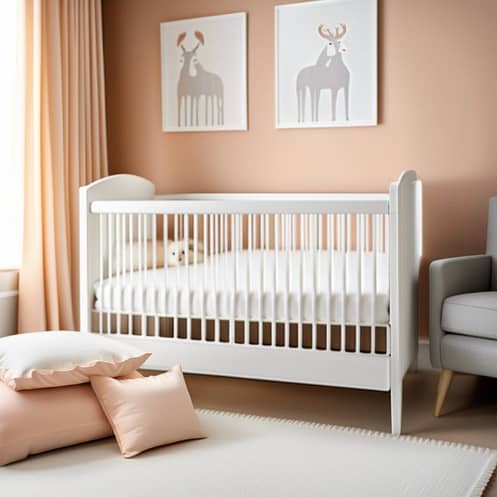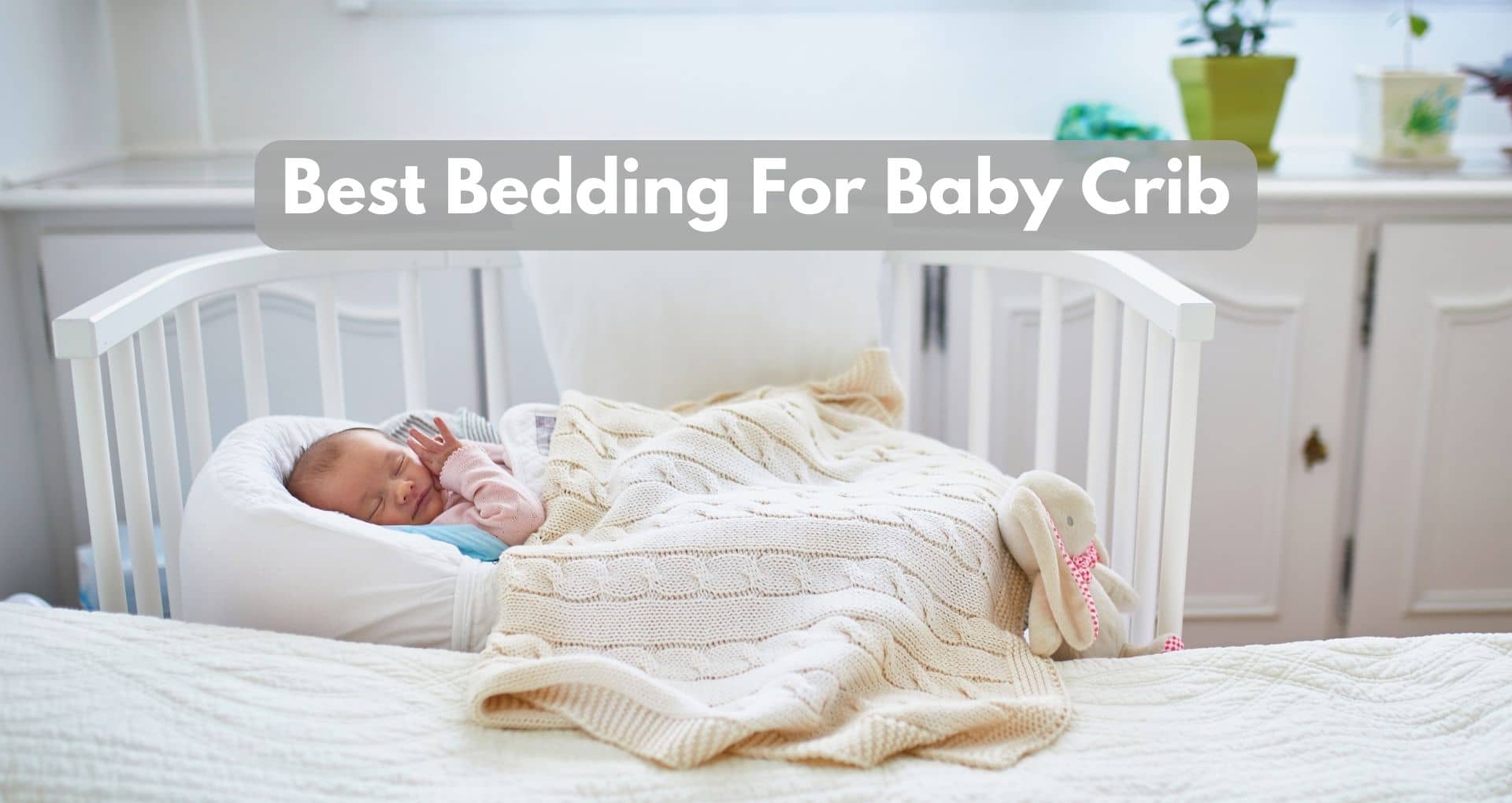If you’re a soon-to-be parent or have a little one already, one of your top concerns is undoubtedly ensuring that your baby’s bedding is safe and comfortable. But with so many options available, it can feel overwhelming to make the right choice. Luckily, we’re here to help! In this article, we’ll guide you through the process of choosing the perfect bedding for your crib, so you can rest easy knowing that your little one is sleeping soundly and safely.
Fit and Size
Choosing the right size
When it comes to choosing bedding for your baby’s crib, one of the most important factors to consider is the size. Crib bedding should fit snugly and securely to ensure your baby’s safety. Ensure that the fitted sheets, blankets, and mattress cover are specifically designed to fit standard crib mattress dimensions. A proper fit will prevent the bedding from bunching up or becoming loose, reducing the risk of suffocation or entanglement.
Ensuring a snug fit
To ensure a snug fit, measure the dimensions of your crib mattress before purchasing bedding. Look for bedding that is designed to fit tightly around the mattress without any excess fabric. A snug fit will prevent the bedding from slipping off or bunching up, keeping your baby comfortable and secure throughout the night. Additionally, avoid using crib bumpers, as these can pose a suffocation risk and interfere with proper airflow.
Material
Opting for natural fibers
When selecting bedding for your baby’s crib, it’s best to opt for materials made from natural fibers. Natural fibers such as cotton or bamboo are breathable, soft, and hypoallergenic, making them ideal choices for your baby’s sensitive skin. These materials also tend to be more durable and less likely to pill or irritate your baby’s skin.
Avoiding synthetic materials
Synthetic materials, such as polyester or nylon, should be avoided when choosing bedding for your baby’s crib. These materials are less breathable and can trap heat and moisture, increasing the risk of overheating and discomfort for your baby. Additionally, synthetic materials may contain chemicals or irritants that can be harsh on your baby’s skin.
Considering hypoallergenic options
If your baby has allergies or sensitive skin, consider choosing hypoallergenic bedding options. Hypoallergenic bedding is specifically designed to minimize the presence of common allergens, such as dust mites or pet dander, reducing the risk of allergic reactions or skin irritations. Look for bedding that is labeled as hypoallergenic or made from materials with hypoallergenic properties, such as organic cotton.
Mattress
Selecting a firm mattress
The mattress is an essential component of your baby’s crib bedding, and it’s important to choose one that provides the right level of support. Opt for a firm mattress that offers proper spinal support and reduces the risk of suffocation. A soft or overly cushioned mattress can pose a suffocation hazard, especially for younger infants who may not have the strength to lift their heads.
Checking for certifications
When purchasing a crib mattress, look for certifications that ensure it meets safety standards. Some common certifications to look for include the CPSC (Consumer Product Safety Commission) certification and the JPMA (Juvenile Products Manufacturers Association) seal. These certifications indicate that the mattress has undergone rigorous testing to ensure its safety and quality.
Sheets
Choosing fitted sheets
Fitted sheets are a must-have for your baby’s crib, as they provide a secure and snug fit. Look for fitted sheets that are specifically designed to fit standard crib mattress dimensions. Avoid using flat sheets that can become loose or untucked, increasing the risk of suffocation. Fitted sheets with elasticized edges are more likely to stay in place and maintain a tight fit.
Looking for breathable fabrics
Breathability is another important factor to consider when choosing crib sheets. Opt for sheets made from breathable fabrics, such as cotton or bamboo. These materials allow air to circulate freely, preventing overheating and ensuring your baby’s comfort throughout the night.
Checking stitching and elastic
Inspect the stitching and elastic on the crib sheets to ensure they are securely attached and in good condition. Loose or frayed stitching can pose a choking hazard, while weak elastic may cause the sheets to slip off the mattress. Regularly check the sheets for any signs of wear and tear, and replace them if necessary.

Source: TheTechBrain
Blankets
Choosing lightweight and breathable blankets
When it comes to blankets for your baby’s crib, it’s important to choose ones that are lightweight and breathable. Avoid using heavy or thick blankets that can increase the risk of overheating or suffocation. Lightweight blankets made from natural fibers, such as cotton muslin, are a good choice as they provide warmth without causing your baby to become too hot.
Avoiding loose or fluffy blankets
To reduce the risk of suffocation or entanglement, it’s essential to avoid using loose or fluffy blankets in your baby’s crib. These types of blankets can pose a potential hazard if they come into contact with your baby’s face. Instead, opt for blankets that are firmly tucked in around the mattress or consider using sleep sacks or wearable blankets for added warmth and safety.
Considering wearable blankets
Wearable blankets, also known as sleep sacks or baby sleeping bags, are a great alternative to traditional blankets. These blankets have openings for the arms and neck, allowing your baby to stay cozy and warm without the risk of loose fabric covering their face. Look for wearable blankets with a TOG (thermal overall grade) rating appropriate for the ambient room temperature, ensuring your baby stays at a comfortable temperature throughout the night.
Pillows and Cushions
Avoiding pillows for infants
It is important to note that pillows should not be used in the crib for infants. Pillows pose a suffocation hazard, especially for younger babies who may not have the strength to move their heads if their face becomes obstructed. Pillows should be omitted from the crib until your child is older and no longer at risk of suffocation.
Considering cushion alternatives
If you want to provide additional comfort for your baby, consider using cushions or padded inserts that are specifically designed for crib use. These cushions can provide a soft and supportive surface for your baby to lie on while minimizing the risk of suffocation or entrapment. Look for cushions that are firm and have breathable covers to ensure your baby remains safe and comfortable.
Bumpers
Checking safety standards
Traditional crib bumpers, which are padded liners that surround the inside of the crib, can pose safety risks and are generally not recommended. They can increase the risk of suffocation, entanglement, and overheating. If you choose to use bumper pads, ensure they meet the safety standards set by regulatory bodies and are specifically designed to minimize these risks. Consider opting for breathable mesh liners that allow for proper airflow while still providing some protection against bumps.
Using alternatives like mesh liners
Mesh liners are a safer alternative to traditional crib bumpers. These liners attach to the inside of the crib and create a breathable barrier, reducing the risk of limb entrapment while promoting proper airflow. Mesh liners can help protect your baby from bumping into the crib slats without posing the same suffocation hazard as traditional bumpers. Always follow the manufacturer’s guidelines when installing mesh liners and regularly inspect them for any signs of damage or wear.
Also Check: Benefits Of Using Baby Wearing Wraps Or Slings
Design and Decorative Elements
Avoiding unnecessary accessories
While it may be tempting to adorn your baby’s crib with decorative accessories and stuffed animals, it’s crucial to avoid unnecessary clutter. Loose items within the crib can pose suffocation or choking hazards. Ensure that all decorations within the crib, such as mobiles or hanging toys, are securely attached and out of your baby’s reach to prevent any accidents.
Ensuring decorations are securely attached
If you do choose to decorate the crib, ensure that all items are securely attached and cannot be pulled off or become loose. Avoid using ribbons, strings, or anything that can potentially wrap around your baby’s neck or limbs. Opt for decorations that are specifically designed for use in cribs and adhere to safety guidelines.
Secondhand Bedding
Checking for safety recalls
If you decide to use secondhand bedding for your baby’s crib, it’s important to thoroughly check for any safety recalls. Check the manufacturer’s website or search for any safety recall notices related to the specific brand or model of bedding. This ensures that you are aware of any potential risks associated with the bedding and can make an informed decision on whether to use it or not.
Inspecting for wear and tear
Carefully inspect secondhand bedding for any signs of wear and tear. Look for loose stitching, frayed edges, or any damage that could pose a safety risk. If in doubt about bedding safety, buy new bedding for your baby’s well-being.
Washing and Maintenance
Following washing instructions
Proper washing and maintenance of your baby’s bedding are crucial for ensuring its cleanliness and safety. Follow manufacturer’s washing instructions to maintain fabric integrity and prevent. Use mild, baby-safe detergents that are free from harsh chemicals or fragrances to minimize the risk of irritation.
Regularly inspecting and replacing worn-out bedding
Regularly inspect your baby’s bedding for any signs of wear and tear. Pay attention to the mattress cover, sheets, blankets, and any other components of the bedding set. Replace any items that show signs of fraying, ripping, or excessive wear. It’s important to ensure that your baby’s bedding remains in good condition to provide a safe and comfortable sleep environment.
